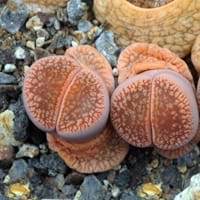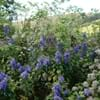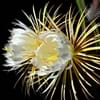Life Span
Perennial
Perennial
Type
Flowering Plants
Cactus or Succulent
Origin
Not Available
Southern Africa
Types
Aconitum napellus
Lithops karasmontana
Lithops pseudotruncatella
Lithops fulviceps
Habitat
Damp shady woods, meadows
Barren waste areas, Desert, Dry areas
USDA Hardiness Zone
12-15
Not Available
AHS Heat Zone
12-10
Not Available
Sunset Zone
21, 22, 23, 24
Not Available
Habit
Oval or Rounded
Rosette/Stemless
Flower Color
Yellow
Not Available
Flower Color Modifier
Not Available
Not Available
Fruit Color
Green
Non Fruiting Plant
Leaf Color in Spring
Not Available
Not Available
Leaf Color in Summer
Not Available
Not Available
Leaf Color in Fall
Not Available
Not Available
Leaf Color in Winter
Not Available
Not Available
Leaf Shape
Compound
Succulent
Thorns
Not Available
Not Available
Plant Season
Not Available
Not Available
Sunlight
Not Available
Not Available
Growth Rate
Very Slow
Not Available
Type of Soil
Not Available
Not Available
The pH of Soil
Not Available
Not Available
Soil Drainage
Not Available
Not Available
Bloom Time
Spring
Not Available
Repeat Bloomer
Not Available
Not Available
Tolerances
Not Available
Not Available
Where to Plant?
Ground
Container, Ground, Pot
How to Plant?
reseeds
root cutting, Seedlings, Stem Cutting
Plant Maintenance
Medium
Medium
Watering Requirements
Do not let dry out between waterings
Does not require lot of watering, Drought Tolerant, Needs very little water
In Summer
Lots of watering
Lots of watering
In Spring
Moderate
Moderate
In Winter
Average Water
Average Water
Soil pH
Not Available
Not Available
Soil Type
Not Available
Not Available
Soil Drainage Capacity
Not Available
Not Available
Sun Exposure
Not Available
Not Available
Pruning
Remove damaged leaves, Remove dead branches, Remove dead leaves
Do not prune during shooting season
Fertilizers
All-Purpose Liquid Fertilizer
can go long without fertilizers, Does not require fertilizer once established
Pests and Diseases
Red blotch
Not Available
Plant Tolerance
Drought
Drought, Dry Conditions, Dry soil, Rocky Soil, Sun
Flowers
Not Available
Showy
Flower Petal Number
Single
Single
Showy Fruit
No
Not Available
Edible Fruit
No
Not Available
Fragrant Flower
Not Available
Not Available
Fragrant Fruit
Not Available
Not Available
Fragrant Leaf
Not Available
Not Available
Fragrant Bark/Stem
Not Available
Not Available
Showy Foliage
Not Available
Not Available
Showy Bark
Not Available
Not Available
Foliage Texture
Bold
Bold
Foliage Sheen
Not Available
Not Available
Invasive
Not Available
Not Available
Self-Sowing
Not Available
Not Available
Attracts
Hummingbirds
Not Available
Allergy
poisonous if ingested, Toxic
Not Available
Aesthetic Uses
Not Used For Aesthetic Purpose
Decorating walls, Ornamental use
Beauty Benefits
Not Available
Not Available
Environmental Uses
Air purification
Air purification
Medicinal Uses
Analgesic, Anodyne, Diaphoretic, Homeopathy, Used as a sedative
Not Available
Part of Plant Used
Root
Not Available
Other Uses
Not Available
Used as Ornamental plant
Used As Indoor Plant
No
Yes
Used As Outdoor Plant
Yes
Yes
Garden Design
Not Available
Alpine, Container, Houseplant, Rock Garden, Wall
Botanical Name
Aconitum
LITHOPS
Common Name
aconite, monkshood, wolf's bane, leopard's bane, mousebane, women's bane, devil's helmet, Queen of all Poisons, blue rocket
pebble plants
living stones
In Hindi
बच्छनाभ
Living Stone
In German
Eisenhut
lebendigen Stein
In French
Queen of all Poisons
Living Stone
In Spanish
Queen of all Poisons
Piedra viva
In Greek
Queen of all Poisons
Living Stone
In Portuguese
Queen of all Poisons
pedra viva
In Polish
Tojad
pedra viva
In Latin
Queen of all Poisons
vivus lapis,
Phylum
Tracheobionta
Tracheophyta
Class
Magnoliopsida
Magnoliopsida
Order
Ranunculales
Caryophyllales
Family
Cactaceae
Aizoaceae
Clade
Angiosperms, Eudicots
Angiosperms, Core eudicots, Eudicots
Tribe
Delphinieae
Ruschiae
Subfamily
Not Available
Ruschioideae
Number of Species
Not Available
Difference Between Queen of all Poisons and Living Stone
If you are confused whether Queen of all Poisons or Living Stone are same, here are some features about those plants to help you choose better. Many people think that these two plants have the same characteristics, but one can see Queen of all Poisons and Living Stone Information and learn more about it. Fertilizers required for proper growth of Queen of all Poisons are All-Purpose Liquid Fertilizer, whereas for Living Stone fertilizers required are can go long without fertilizers and Does not require fertilizer once established. Hence, one should know the basic difference between Queen of all Poisons and Living Stone if you are planning to have them in your garden to enhance its beauty.
<
Flowering PlantsImportance of Queen of all Poisons and Living Stone
Want to have the most appropriate plant for your garden? You might want to know the importance of Queen of all Poisons and Living Stone. Basically, these two plants vary in many aspects. Compare Queen of all Poisons and Living Stone as they differ in many characteristics such as their life, care, benefits, facts, etc. Every gardener must at least have the slightest clue about the plants he wants to plant in his garden. Compare their benefits, which differ in many ways like facts and uses. The medicinal use of Queen of all Poisons is Analgesic, Anodyne, Diaphoretic, Homeopathy and Used as a sedative whereas of Living Stone is Not Available. Queen of all Poisons has beauty benefits as follows: Not Available while Living Stone has beauty benefits as follows: Not Available.
Compare Facts of Queen of all Poisons vs Living Stone
How to choose the best garden plant for your garden depending upon its facts? Here garden plant comparison will help you to solve this query. Compare the facts of Queen of all Poisons vs Living Stone and know which one to choose. As garden plants have benefits and other uses, allergy is also a major drawback of plants for some people. Allergic reactions of Queen of all Poisons are poisonous if ingested and Toxic whereas of Living Stone have Not Available respectively. Having a fruit bearing plant in your garden can be a plus point of your garden. Queen of all Poisons has no showy fruits and Living Stone has no showy fruits. Also Queen of all Poisons is not flowering and Living Stone is not flowering . You can compare Queen of all Poisons and Living Stone facts and facts of other plants too.





